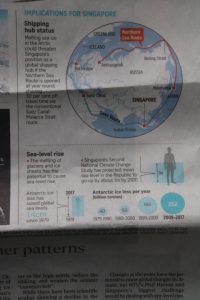Our arrival at Manchester at 8:20 this morning followed 18 hours of flying from Hong Kong via Singapore. The Hong Kong section was easy by flying over the South China Sea. The section from Singapore was more complicated. We took a short cut across the Indian Ocean to Southeast India and then over the Arabian Sea near Mumbai. The city looked amazing from the air at night. We flew south of Karachi and just offshore of Afghanistan. Tehran (Iran) also looked superb from 39,000ft and especially the star shaped satellite cities which all appeared to have a central tower/minaret along the remains of the Silk Road.
For the next 3 hours things got difficult as we had to make many right and left turns to avoid Iraq and Syria and countries over which many airlines do not have over flying rights.
We entered Europe on the west coast of the Black Sea with just over 4 hours to go. Central Europe was snow covered and lakes in Poland frozen. Things improved by the Humber Estuary where a light dusting of snow gave a grey edge to the low-lying land. Looking forward one could see the brown peat covered summits of the Pennines and the wind farm at Ingbirchworth standing proud above the advection fog. We followed the A635 across Saddleworth Moor and Buckton Castle quarry before landing with caution on a runway which needed care and attention in the cold weather.
A great journey totalling 20,310 miles approximately.
On the aeroplane we read an article in ‘The Straits Times’ of Singapore. The article considered the effects of global warming upon Singapore and how human induced global warming could seriously affect the trade in the region. The warming could lead to more melting of the Arctic ice which could allow ships to sail through the Russian Arctic from the Atlantic to the Pacific. It is somewhat ironic that the human endeavours, enterprise and cooperation that led to the development of land and sea routes for trade in the region could be threatened by human influences of a negative kind and lead to an end to historical continuity in the region.

